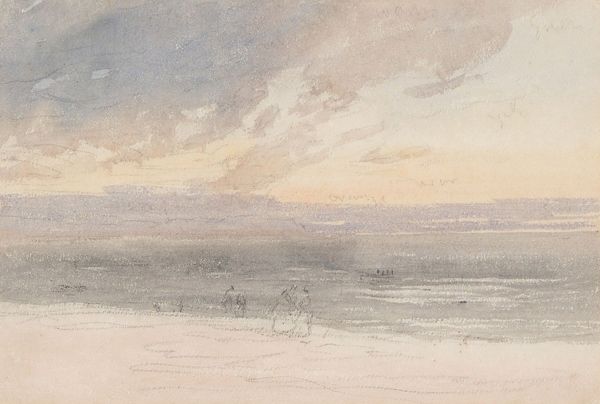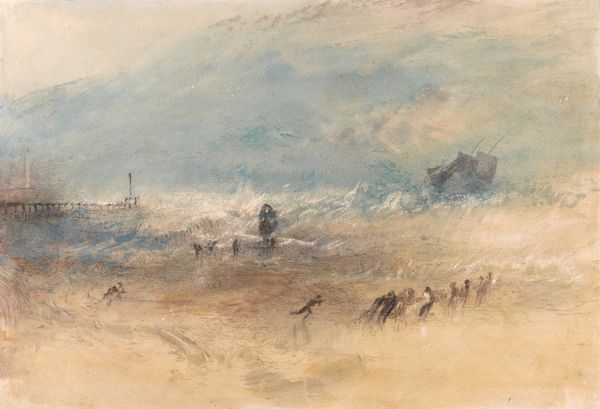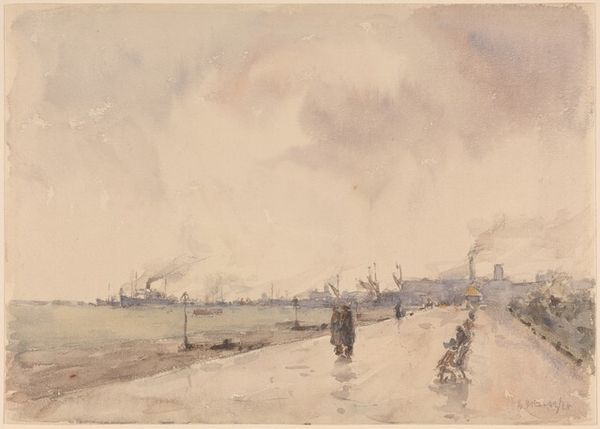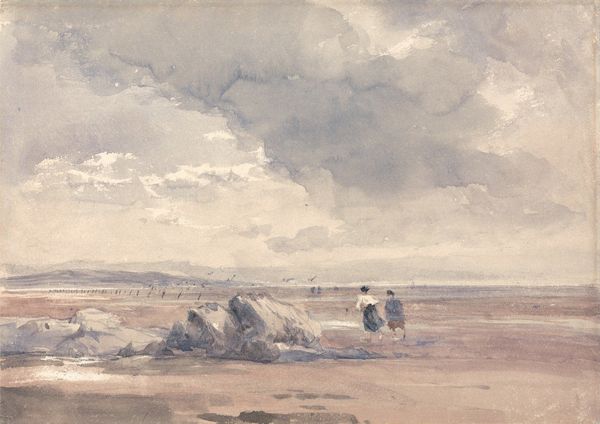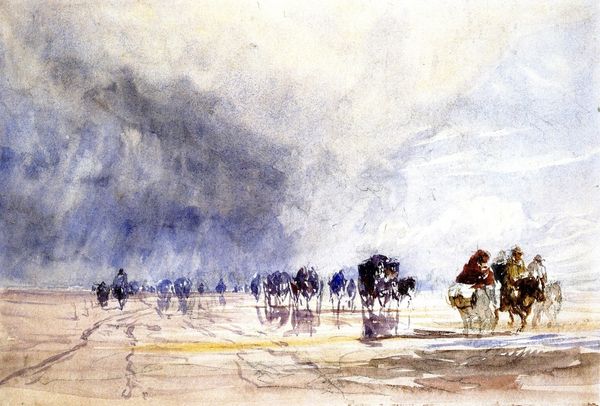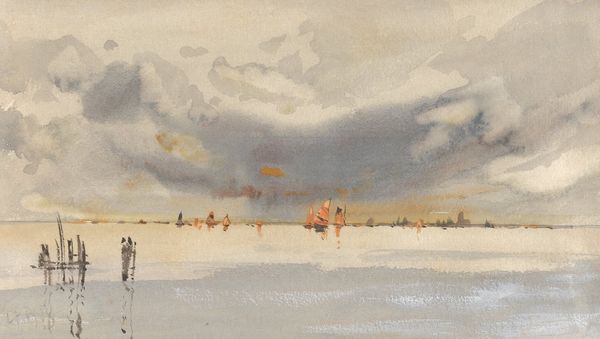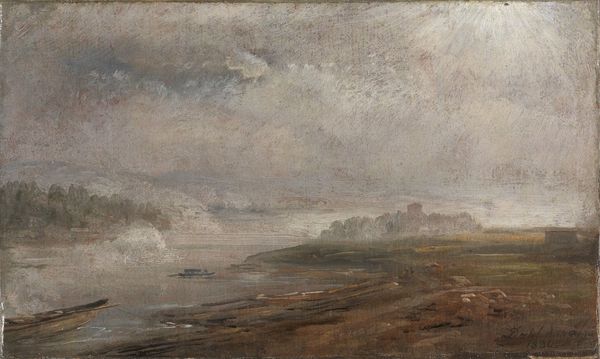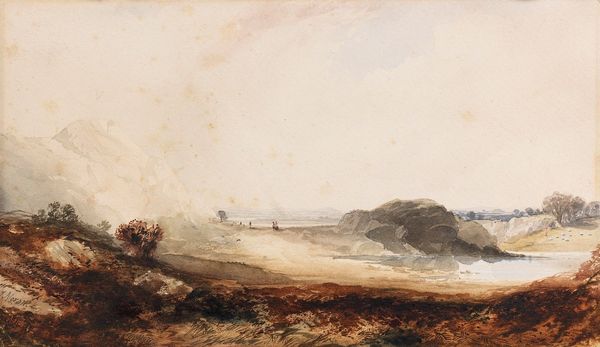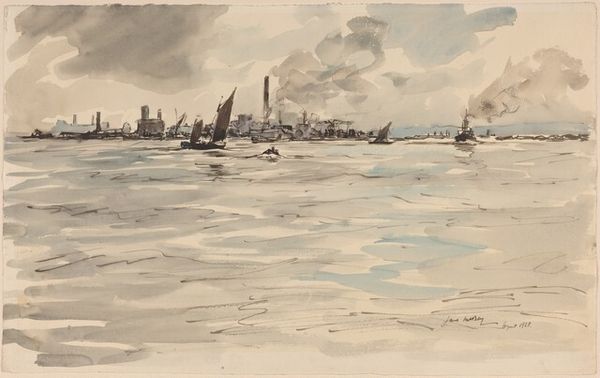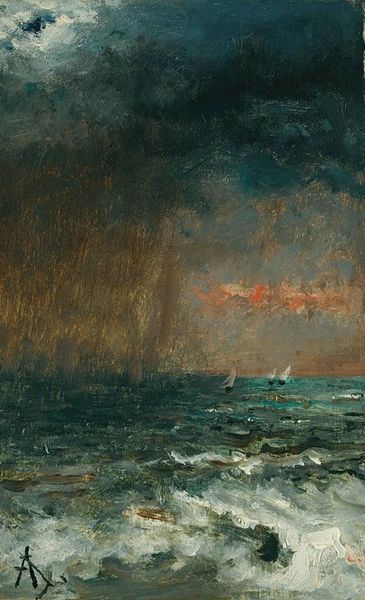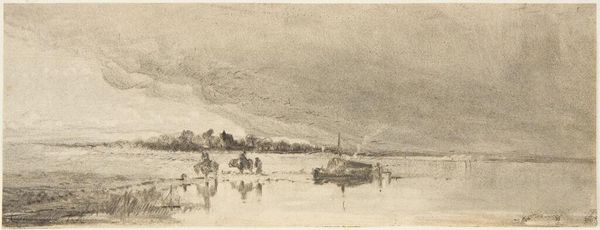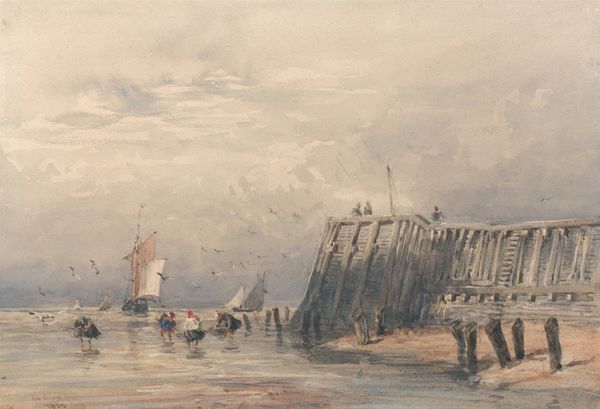
plein-air, watercolor, pastel
#
water colours
#
plein-air
#
landscape
#
watercolor
#
romanticism
#
pastel chalk drawing
#
pastel
Copyright: Public Domain: Artvee
Editor: This is David Cox’s “Morecambe Sands,” likely from the 1830s. The washes of watercolor and pastel chalk drawing give it a very transient, ethereal quality, like the scene could vanish at any moment. What can you tell us about it? Curator: It's tempting to get lost in the Romanticism of the scene, but I'm immediately drawn to the materiality. Cox, working en plein-air, would have been acutely aware of the immediate environment and available resources. Think about the cost and accessibility of these materials - watercolor and pastel chalk. Were these readily available, mass produced or more artisanal, handcrafted? This access inevitably affected his process and what he was able to capture. Editor: That's a really interesting angle. I hadn’t considered the economic side of artistic materials at the time. So the type of chalk and watercolours being used informs our understanding? Curator: Exactly. This work would have been influenced by mass production, and we need to analyze if the means of creating the picture reflect, support, or question, the societal shifts of that era. Where was it displayed and to whom? That pastel rainbow arches like some marketing symbol to entice purchases...what are we being sold? The landscape? The sublime? The industrial manufacturing that provided access to such supplies? Editor: I see your point! The accessibility of materials shapes not just the art, but potentially the social and economic narratives around it. Curator: Precisely. It challenges the art’s seemingly innate “beauty,” and demands us to consider the tangible processes and material origins embedded within its creation. Editor: I’ll never look at a pastel landscape the same way again. Thinking about the social context and material conditions really opens it up! Curator: That's the key – understanding that art is as much about its physical existence and how it's made as it is about some idealized representation.
Comments
No comments
Be the first to comment and join the conversation on the ultimate creative platform.
